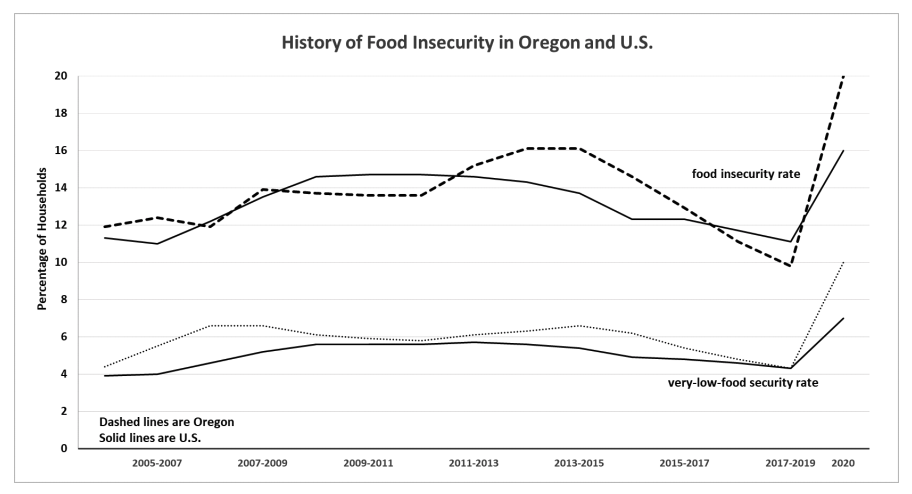Noticias
OSU’s Study of Food Insecurity Calculates 25% Rate in Oregon in 2020
OSU’s Study of Food Insecurity Calculates 25% Rate in Oregon in 2020

OSU Policy Analysis Laboratory (OPAL) in the School of Public Policy in Corvallis recently released a study of Oregon’s Food Insecurity in the time of COVID-19. As we’ve seen first-hand across the Oregon Food Bank Network, OPAL’s report outlines how the pandemic caused Oregon’s food insecurity rate to more than double within a year to about 1 million Oregonians.
One in four people in the state experienced food insecurity in 2020. That’s a rate of 25%, yet the report cites a disproportionate rate of about 30% for Black, Indigenous and other people of color in Oregon.
Giving credit to Oregon’s safety net, including Oregon Food Bank, the study also finds that it could have been worse. While one in four people in Oregon experience food insecurity in the time of COVID-19, the previous three years marked the lowest food insecurity ever for Oregon. Due to this strengthened food system in place prior to the pandemic, state and private agencies were well-positioned to respond to the spike in hunger during this crisis.
